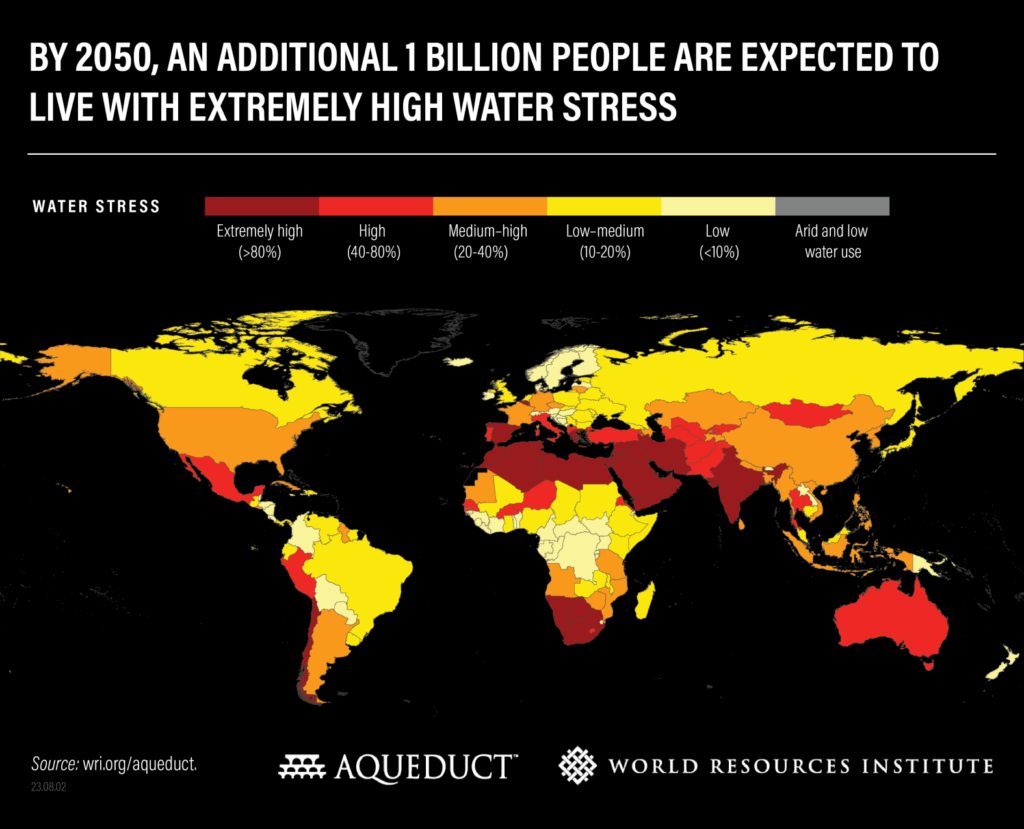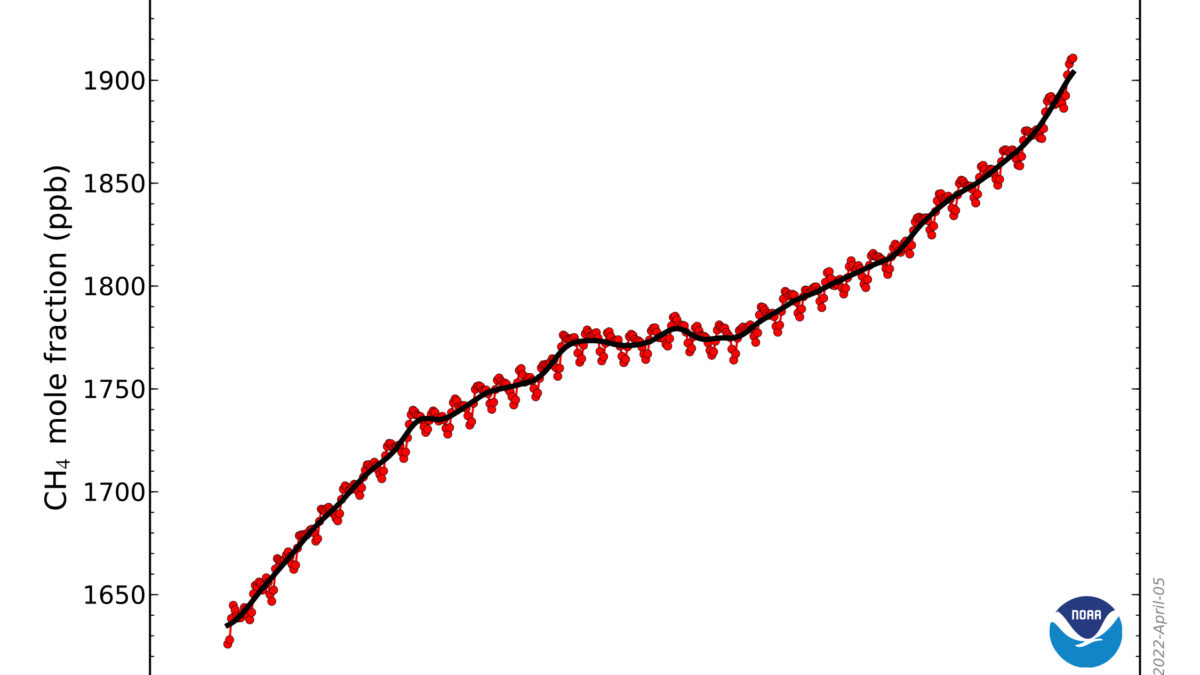25 countries, housing one-quarter of the population, face extremely high water stress – By 2050, an additional 1 billion people will live with extremely high water stress
By Samantha Kuzma, Liz Saccoccia, and Marlena Chertock
16 August 2023
(WRI) – New data from WRI’s Aqueduct Water Risk Atlas show that 25 countries — housing one-quarter of the global population — face extremely high water stress each year, regularly using up almost their entire available water supply. And at least 50% of the world’s population — around 4 billion people — live under highly water-stressed conditions for at least one month of the year.
Living with this level of water stress jeopardizes people’s lives, jobs, food and energy security. Water is central to growing crops and raising livestock, producing electricity, maintaining human health, fostering equitable societies and meeting the world’s climate goals.
Without better water management, population growth, economic development and climate change are poised to worsen water stress.
Here, we dive deep into what’s causing growing water stress — and which countries and regions will be impacted the most.
What’s Causing Global Water Stress?
Across the world, demand for water is exceeding what’s available. Globally, demand has more than doubled since 1960.
Increased water demand is often the result of growing populations and industries like irrigated agriculture, livestock, energy production, and manufacturing. Meanwhile, lack of investment in water infrastructure, unsustainable water use policies or increased variability due to climate change can all affect the available water supply.
Water stress, the ratio of water demand to renewable supply, measures the competition over local water resources. The smaller the gap between supply and demand, the more vulnerable a place is to water shortages. A country facing “extreme water stress” means it is using at least 80% of its available supply, “high water stress” means it is withdrawing 40% of its supply.
Without intervention — such as investment in water infrastructure and better water governance — water stress will continue to get worse, particularly in places with rapidly growing populations and economies.

Which Countries Face the Worst Water Stress?
Our data shows that 25 countries are currently exposed to extremely high water stress annually, meaning they use over 80% of their renewable water supply for irrigation, livestock, industry, and domestic needs. Even a short-term drought puts these places in danger of running out of water and sometimes prompts governments to shut off the taps. We’ve already seen this scenario play out in many places around the world, such as England, India, Iran, Mexico, and South Africa.
The five most water-stressed countries are Bahrain, Cyprus, Kuwait, Lebanon, Oman, and Qatar. The water stress in these countries is mostly driven by low supply, paired with demand from domestic, agricultural and industrial use.
The most water-stressed regions are the Middle East and North Africa, where 83% of the population is exposed to extremely high water stress, and South Asia, where 74% is exposed.
The Situation is Poised to Worsen
By 2050, an additional 1 billion people are expected to live with extremely high water stress, even if the world limits global temperature rise to 1.3 degrees C to 2.4 degrees C (2.3 degrees F to 4.3 degrees F) by 2100, an optimistic scenario.
Global water demand is projected to increase by 20% to 25% by 2050, while the number of watersheds facing high year-to-year variability, or less predictable water supplies, is expected to increase by 19%. For the Middle East and North Africa, this means 100% of the population will live with extremely high water stress by 2050. That’s a problem not just for consumers and water-reliant industries, but for political stability. In Iran, for example, decades of poor water management and unsustainable water use for agriculture are already causing protests — tensions that will only intensify as water stress worsens.
Water Demand Is Exploding in Africa; Plateauing in Wealthier Nations
The biggest change in water demand between now and 2050 will occur in Sub-Saharan Africa. While most countries in Sub-Saharan Africa are not extremely water-stressed right now, demand is growing faster there than any other region in the world. By 2050, water demand in Sub-Saharan Africa is expected to skyrocket by 163% — 4 times the rate of change compared to Latin America, the second-highest region, which is expected to see a 43% increase in water demand.
This increase in water use, mainly expected for irrigation and domestic water supply, could foster major economic growth in Africa — projected to be the fastest-growing economic region in the world. However, inefficient water use and unsustainable water management also threatens to lower the region’s GDP by 6%.
Meanwhile, water demand has plateaued in wealthier countries in North America and Europe. Investment in water-use efficiency has helped reduce in-country water use in high income countries, but water use and dependencies extend beyond national boundaries, and the water embedded in international trade from lower-middle income countries to high income countries will increasingly contribute to rising water stress in low and lower-middle income countries.

Water Stress Could Majorly Disrupt Economies and Agricultural Production
Increasing water stress threatens countries’ economic growth as well as the world’s food security.
According to data from Aqueduct, 31% of global GDP — a whopping $70 trillion — will be exposed to high water stress by 2050, up from $15 trillion (24% of global GDP) in 2010. Just four countries — India, Mexico, Egypt, and Turkey — account for over half of the exposed GDP in 2050.
Water shortages can lead to industrial interruptions, energy outages and agricultural production losses — like those already being seen in India, where a lack of water to cool thermal powerplants between 2017 and 2021 resulted in 8.2 terawatt-hours in lost energy – or enough electricity to power 1.5 million Indian households for five years. Failing to implement better water management policies could result in GDP losses in India, China, and Central Asia of 7% to 12%, and 6% in much of Africa by 2050 according to the Global Commission on Adaptation.
Global food security is also at risk. Already, 60% of the world’s irrigated agriculture faces extremely high water stress — particularly sugarcane, wheat, rice, and maize. Yet to feed a projected 10 billion people by 2050, the world will need to produce 56% more food calories than it did in 2010 — all while dealing with increasing water stress as well as climate-driven disasters like droughts and floods. [more]
25 Countries, Housing One-quarter of the Population, Face Extremely High Water Stress




